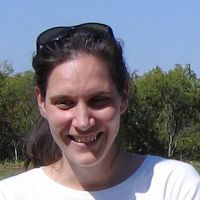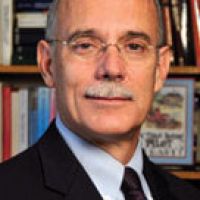Dialynas et al., 2014
Assessing the impact of landscape evolution on carbon dynamics: a coupled physically-based modelling approach
Dialynas, Y. G.; Bastola, S.; Billings, S. A.; Bras, R. L. (2014)
American Geophysical Union annual meeting, San Francisco, California, December, 2014
-
Calhoun, Luquillo, INVESTIGATOR
-
Calhoun, Luquillo, INVESTIGATOR, COLLABORATOR
-
Calhoun, INVESTIGATOR
-
Calhoun, Luquillo, INVESTIGATOR
Abstract
Soil erosion and deposition play an important role in the global carbon (C) cycle, constituting an important driver of atmospheric CO2. Clarification of the net effect of landscape evolution on the C cycle may be achieved using coupled fully-distributed modelling of hydro-geomorphic and biogeochemical processes. We developed a distributed model of soil organic C (SOC) dynamics within an existing coupled physically-based hydro-geomorphic model (tRIBS - Erosion) to simulate the effects of soil erosion and deposition on C dynamics at basin scale. The SOC mass balance is analytically formulated at each cell using temporally variant, continuous vertical profiles of SOC content and SOC production and oxidation rate constants derived from SOC turnover characteristics. Landscape evolution feedbacks on C dynamics include the redistribution of eroded SOC, and the alteration of the SOC production and oxidation throughout the corresponding vertical profiles due to geomorphic perturbations. At each time step, model outputs include lateral and vertical C fluxes, and SOC content, at each soil column. We applied the model to the Calhoun Experimental Forest in South Carolina, which constitutes a forest recovering from agricultural land degradation prior to the mid-20th century. To test performance we carried out a point comparison against a spreadsheet-based model, SOrCERO (Soil Organic Carbon, Erosion, Replacement, and Oxidation) of SOC dynamics, which estimates effects of SOC erosion and altered SOC production and oxidation on CO2 release at an eroding profile. At a point, time integrated results from the two models were comparable. The proposed model has the additional advantage of being able to quantify C sinks and sources across the landscape in a spatially explicit manner, by systematically accounting for topographic controls on C dynamics. Sensitivity analysis suggested that the alteration of SOC production and oxidation due to landscape evolution and management practices exert a strong control on soil-atmosphere C exchange.
Citation
Dialynas, Y. G.; Bastola, S.; Billings, S. A.; Bras, R. L. (2014): Assessing the impact of landscape evolution on carbon dynamics: a coupled physically-based modelling approach. American Geophysical Union annual meeting, San Francisco, California, December, 2014.
 This Paper/Book acknowledges NSF CZO grant support.
This Paper/Book acknowledges NSF CZO grant support.
Explore Further




